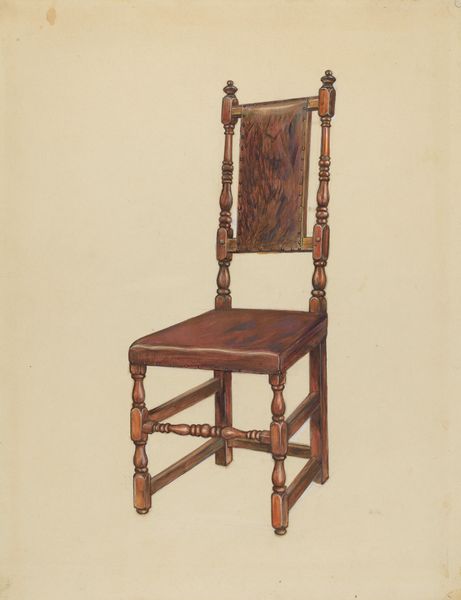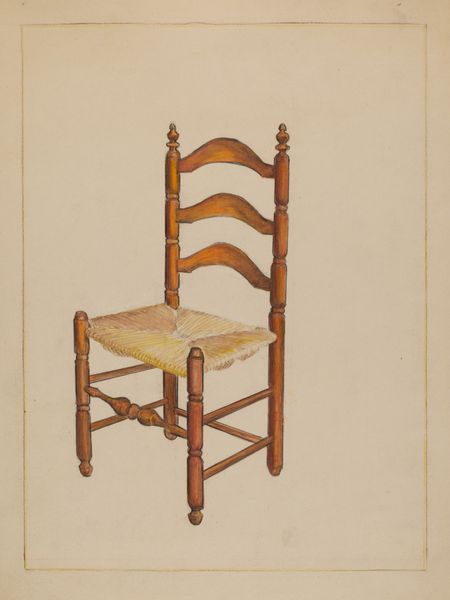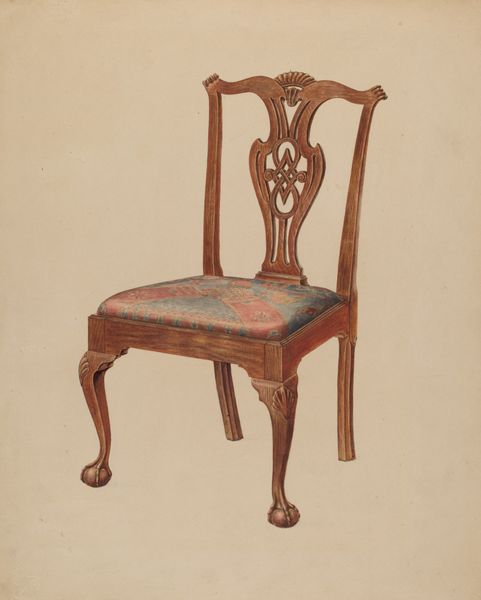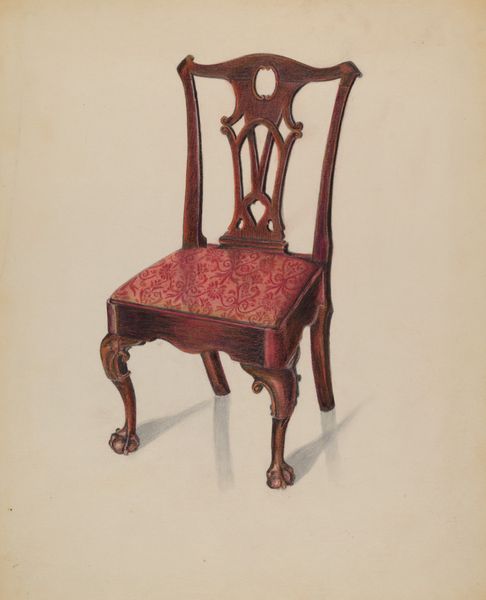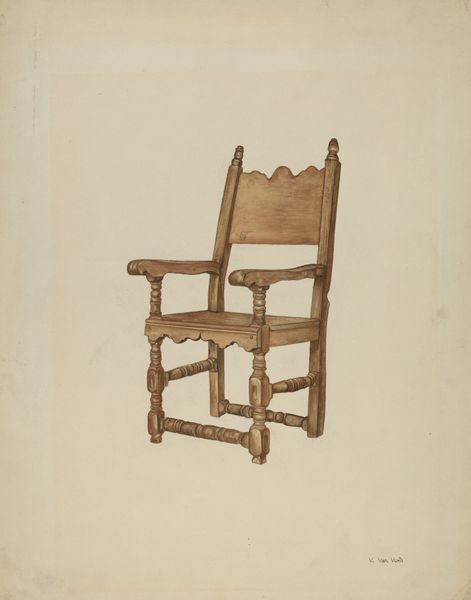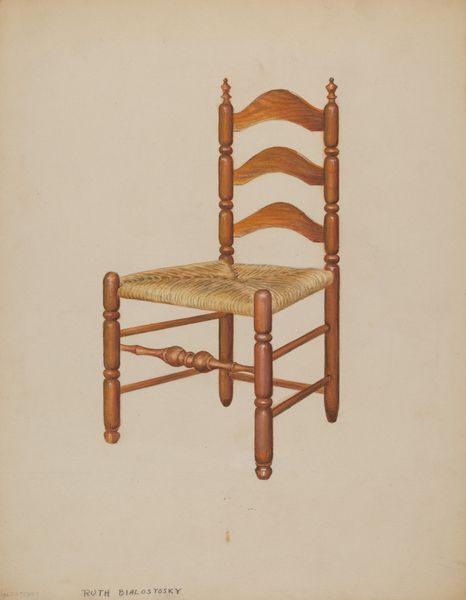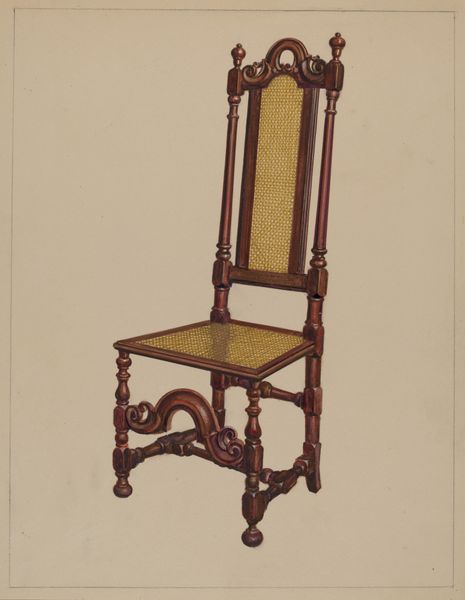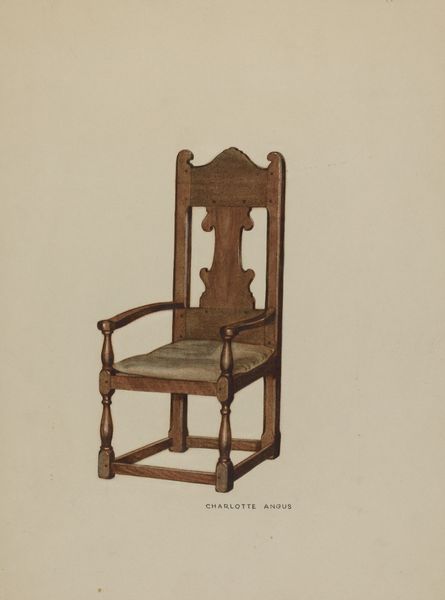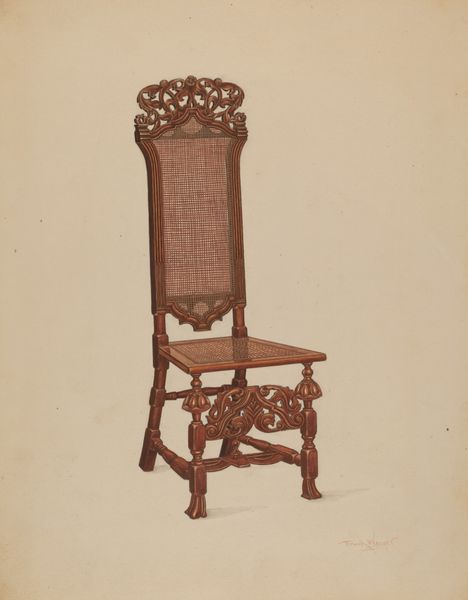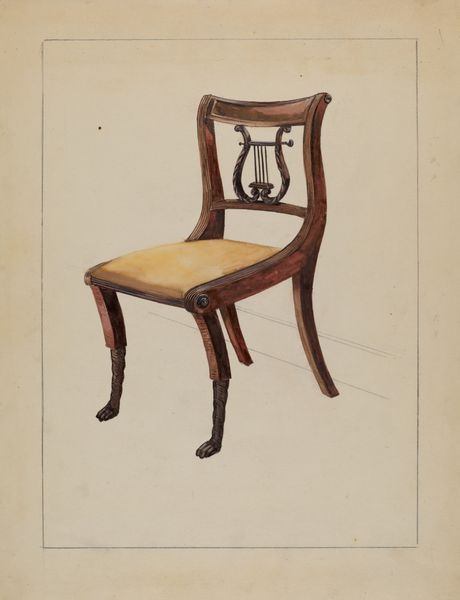
drawing, watercolor
#
drawing
#
etching
#
watercolor
#
pencil drawing
#
academic-art
#
watercolor
Dimensions: overall: 29.3 x 23.1 cm (11 9/16 x 9 1/8 in.) Original IAD Object: none given
Copyright: National Gallery of Art: CC0 1.0
Editor: Here we have Florence Choate's "Side Chair" from around 1936, rendered in watercolor and pencil. There's something almost melancholic about how this everyday object is presented with such formality. What strikes you about this piece? Curator: The social history surrounding objects like this, especially when depicted in art, is fascinating. On the surface, it’s simply a chair. But consider when and why Choate chose to paint this seemingly mundane item. What role did craft play in American art during the 1930s, and how might the public reception of decorative arts have shifted in that era? Was this chair perhaps part of a larger conversation around design, utility, and aesthetics during a time of economic hardship? Editor: That's interesting! I hadn't thought about it that way. It makes me wonder if the chair represents a certain ideal of domesticity or perhaps even speaks to class. Curator: Exactly. And whose domesticity are we talking about? During the Depression, there was a conscious effort by the government and institutions to promote certain visions of American life. The chair itself may have been viewed differently by different socio-economic groups. Was this type of chair mass-produced or custom made? Consider the visual weight Choate gives the chair – it’s centered, presented almost like a portrait. Does that suggest anything about its perceived value? Editor: So, even a seemingly simple drawing of a chair can be interpreted through the lens of social and political history. It is less about the chair, and more about what the chair represented. Curator: Precisely. It challenges us to see beyond the surface and question the cultural narratives embedded within everyday objects. This gives agency to the artwork, placing it firmly within social conversations and interpretations. Editor: I see it completely differently now. Thanks! Curator: My pleasure. It is always helpful to see art from different viewpoints.
Comments
No comments
Be the first to comment and join the conversation on the ultimate creative platform.
